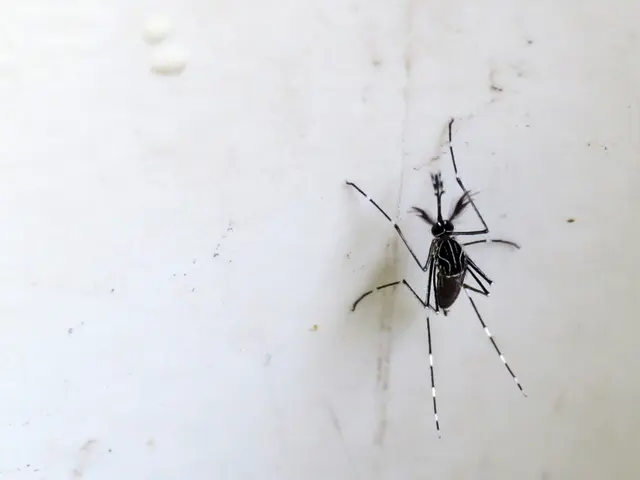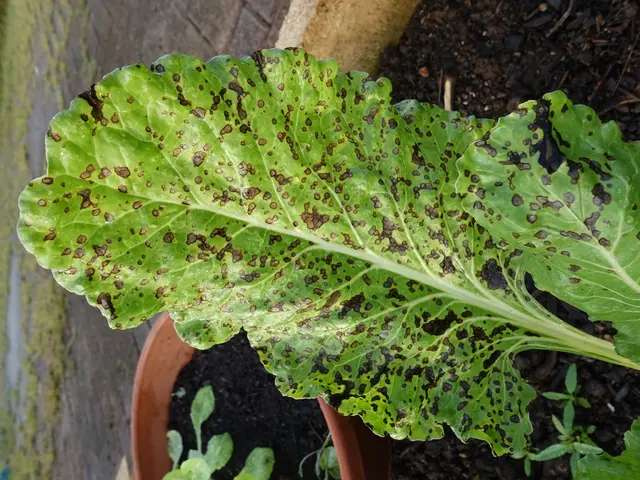Exploring the Advantages of Cover Crops: Why They Matter for Agriculture
Spruce up your soil like a boss with cover crops – no fancy equipment or expertise needed! Here's the lowdown on fall cover crops, the easy way to boost your garden game this season.
You've probably been keeping your garden busy with fall crops, but have you ever thought about planting cover crops? Yeah, me neither, until a few years ago. But trust me, they're a game-changer for soil health.
Cover crops are any legumes or grasses you plant to benefit the soil, not for their actual yield. You typically plant them in the fall, letting them sprout and overwinter. This effortlessly guards against erosion, suppresses weeds, and adds nutrients back into the soil.
Each cover crop brings unique perks, but the goal is the same: cover your soil with a seed blend, let it grow, and reap the benefits come spring. Whether you mow, till, leave, or pull the cover, crops they provide major soil love.
Why should you start using cover crops?
- So simple!: Plant, spread, and let 'em do their thing.
- Slow-release nutrients: Some crops pull nitrogen from the air and release it back into the soil over time. Others add phosphorus.
- Boost organic matter: Cover crops act as their own compost pile, building up plant matter faster than traditional composting.
- Prevent weeds: Dense cover crops make it tough for weeds to take hold. However, remember to pull or till cover crops that don't naturally die off in the winter to avoid springtime weed problems.
- Prevent erosion: Cover crops keep soil right where it belongs, avoiding winter depression and barrenness in the spring.
- Conserve water: Each root creates pores in the soil for better water absorption.
- Enhance biodiversity: Invite different insects and pollinators to hang out in your garden.
- Clear out diseases: If lingering fungal diseases are haunting your garden, plant cover crops to help break the cycle.
When and How to Plant Cover Crops:
We plant cover crops in the fall, about when our gardens go dormant for the winter. Technically, they can be planted anytime of year in anticipation of a growing season, but we'll stick to the fall for now. Plant anytime before fall frosts make the soil too tough to work with – you can even plant covers while you harvest your fall crops.
If you live in colder regions, choose cover crops acclimated to chilly climes to ensure they survive the winter.
Common Types of Cover Crops:
Legumes are nitrogen fixers, while grasses focus more on long-term soil enhancement. Here are some common cover crop options along with their benefits:
- Oats: Helps keep weeds at bay and prevent soil erosion. Great for clay soil and dies off naturally in the winter. Covers 100 square feet with 4 pounds of oats.
- Ryegrass: Easy to grow and quick to establish, soaking up water and preventing erosion. Unlike oats, ryegrass dies off in the winter and resumes growth in the spring. Requires about a pound for 100 square feet.
- Peas: Nitrogen fixers that can produce up to 300 pounds of nitrogen per acre. Quick growing and good at smothering weeds. Covers 100 square feet with 5 pounds of peas.
- Buckwheat: Fast-growing crop that helps combat weeds and soil erosion. Dies off in the winter and covers 100 square feet with 1 pound of seed.
- Hairy vetch: Another nitrogen fixer, this plant grows quickly and helps smother weeds. Unlike peas, hairy vetch resumes growth in the spring. Plant 1 pound per 100 square feet.
Planting Cover Crops:
- Clear the garden of vegetation and work the soil three inches deep.
- Sprinkle seeds evenly and encourage your little helpers to chip in.
- Lightly cover seeds with soil or rake them into the soil.
- Keep the garden area moist until the seeds germinate.
- Watch your living mulch thrive during the winter months!
As spring approaches, begin taking care of the cover crops about a month before you plant your spring croppers. Mow, dry, and till the cover crops in, or leave them as a natural mulch. You can also dig up space where you want to plant your spring crops.
Give cover crops a shot, and watch your garden flourish with better soil health, reduced weeds, and improved resistance to erosion, disease, and pests.
Stay green, friends!
Gardening Posts You'll Adore!
- 10 Vegetables to Plant in Your Spring Garden
- 5 Simple Steps to Start Seeds Indoors
- DIY Guide to Prepare a New Garden Bed
- For the Sustainable Lifestyle Enthusiasts: Join Our Facebook Group – The Self Sufficient Life (Join here)
- Cover crops are a great addition to your home-and-garden, as they help boost your garden's health, improve soil nutrition, and reduce weed growth.
- When planning your home-and-garden lifestyle for next season, don't forget the benefits of incorporating various cover crops like oats, ryegrass, peas, buckwheat, and hairy vetch in your garden to reap the rewards on your lifestyle and garden's overall well-being.








